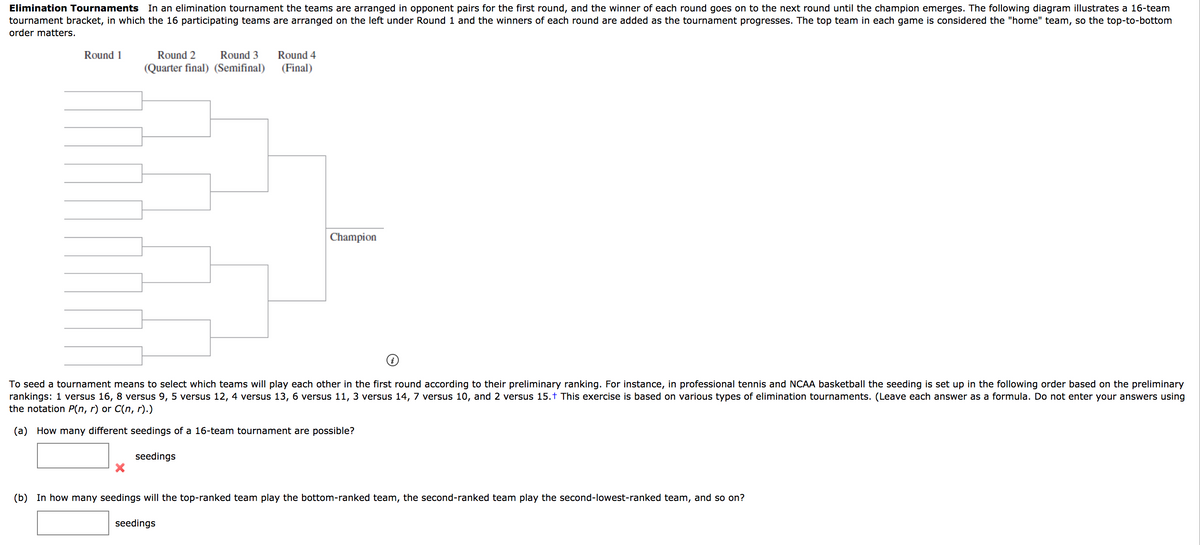Elimination Tournaments In an elimination tournament the teams are arranged in opponent pairs for the first round, and the winner of each round goes on to the next round until the champion emerges. The following diagram illustrates a 16-team tournament bracket, in which the 16 participating teams are arranged on the left under Round 1 and the winners of each round are added as the tournament progresses. The top team in each game is considered the "home" team, so the top-to-bottom order matters. Round 4 (Final) Round I Round 2 Round 3 (Quarter final) (Semifinal)
Permutations and Combinations
If there are 5 dishes, they can be relished in any order at a time. In permutation, it should be in a particular order. In combination, the order does not matter. Take 3 letters a, b, and c. The possible ways of pairing any two letters are ab, bc, ac, ba, cb and ca. It is in a particular order. So, this can be called the permutation of a, b, and c. But if the order does not matter then ab is the same as ba. Similarly, bc is the same as cb and ac is the same as ca. Here the list has ab, bc, and ac alone. This can be called the combination of a, b, and c.
Counting Theory
The fundamental counting principle is a rule that is used to count the total number of possible outcomes in a given situation.

Trending now
This is a popular solution!
Step by step
Solved in 2 steps with 2 images







